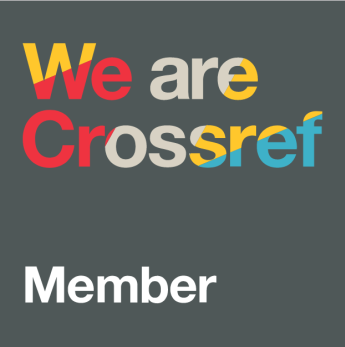The relationship between genre-based English learning material to Indonesian learner's motivation and achievement
DOI:
https://doi.org/10.21831/lt.v7i1.28137Keywords:
Genre-based, Motivation, Writing, AchievementAbstract
Achieving an effective learning activity requires appropriate teaching materials in the learning process. Yet, there are some problems in the preparation of learning materials to teach that affect delivering the materials in the learning process. This paper is aimed to examine the impact genre-based as a learning material which is able to motivate learners in learning with interesting activity for learning process to improve learners' writing achievement. The finding of this study shows that the learner's motivation and achievement were improved. Also, there were a strong relationship between the usability of Genre-based learning materials to learner's motivation and achievement. The result of this study is expected going to be applicable for teachers who want to shift their teacher-centered learning style to be learner-centered style in writing activities. Also, it is for the reader who is concerning to English learning media and learners motivation.
References
Akrim, M. (2018). Media learning in digital era. Proceedings of the 5th International Conference on Community Development (AMCA 2018). https://doi.org/10.2991/amca-18.2018.127
Anderson, M., & Anderson, K. (1997). Text types in English (Vol. 2). Macmillan Education AU.
Brown, H. D., & Lee, H. (2001). Teaching by principles: An interactive approach to language pedagogy. Prentice Hall Regents Englewood Cliffs, NJ.
Cresswell, J. (2016). Research design: Pendekatan metode kualitatif, kuantitatif, dan campuran (Edisi 4). Pustaka Pelajar.
Dirgeyasa, I. W. (2016). Genre-based approach: What and how to teach and to learn writing. English Language Teaching, 9(9), 45. https://doi.org/10.5539/elt.v9n9p45
Dí¶rnyei, Z. (2008). Motivation strategies in the language classroom. Ernst Klett Sprachen.
Fareed, M., Ashraf, A., & Bilal, M. (2016). ESL learners' writing skills: Problems, factors and suggestions. Journal of Education & Social Sciences, 4(2), 83–94. https://doi.org/10.20547/jess0421604201
Firkins, A., Forey, G., & Sengupta, S. (2007). Teaching writing to low proficiency EFL students. ELT Journal, 61(4), 341–352. https://doi.org/10.1093/elt/ccm052
Gardner, R. C. (2007). Motivation and second language acquisition. Porta Linguarum, 8, 9–20. http://hdl.handle.net/10481/31616
Ghufron, M. A., Saleh, M., Warsono, W., & Sofwan, A. (2016). A model of research paper writing instructional materials for academic writing course: Needs & documents analysis and model design. English Language Teaching, 9(3), 1. https://doi.org/10.5539/elt.v9n3p1
Harmer, J. (2007a). The practice of language teaching (4th ed.). Longman.
Harmer, J. (2007b). How to teach English (second edition). ELT Journal, 62(3), 313–316. https://doi.org/10.1093/elt/ccn029
Hyland, K. (2018). Genre and second language writing. In The TESOL Encyclopedia of English Language Teaching (pp. 1–6). John Wiley & Sons, Inc. https://doi.org/10.1002/9781118784235.eelt0535
Johns, A. M. (2011). The future of genre in L2 writing: Fundamental, but contested, instructional decisions. Journal of Second Language Writing, 20(1), 56–68. https://doi.org/10.1016/j.jslw.2010.12.003
Larkin, T., & Budny, D. (2005). Writing as an active learning tool. 2005 6th International Conference on Information Technology Based Higher Education and Training, S2A/22-S2A/23. https://doi.org/10.1109/ITHET.2005.1560316
Lunenburg, F. C., & Lunenburg, M. R. (2014). Teaching writing in elementary schools: Using the learning-to-write process. International Journal of Education, 2(1), 1–27.
Marlin, S., & Ashadi, A. (2019). Examining English textbook prototype development for vocational high school students. LingTera, 6(2), 162–171. https://doi.org/10.21831/lt.v6i2.12683
Moore-Hart, M. A. (2010). Teaching writing in diverse classrooms, k-8: Enhancing writing through literature, real-life experiences, and technology. Pearson/Allyn and Bacon.
Pao, B. (2016). The influence of reading habit and grammar knowledge on the students'capability of writing narrative texts. LingTera, 3(2), 122–129. https://doi.org/10.21831/lt.v3i2.11110
Phalychan, B., & Sugirin, S. (2019). Developing English writing instructional materials for second year university students of English Department. LingTera, 6(2), 154–161. https://doi.org/10.21831/lt.v6i2.10634
Richards, J. C., & Renandya, W. A. (2002). Methodology in language teaching: An anthology of current practice. Cambridge University Press.
Tynjälä, P., Mason, L., & Lonka, K. (2001). Writing as a learning tool: An introduction. In Writing as a Learning Tool. Studies in Writing (pp. 7–22). Springer. https://doi.org/10.1007/978-94-010-0740-5_2
Weber, J.-J. (2001). A concordance- and genre-informed approach to ESP essay writing. ELT Journal, 55(1), 14–20. https://doi.org/10.1093/elt/55.1.14
Whitney, A. E. (2017). Keeping it real: Valuing authenticity in the writing classroom. English Journal, 106(6), 16.
Widayati, S. (2002). Pengembangan kemampuan memahami teks cerita pendek. Bintang Pustaka.
Wimolmas, R. (2010). A survey study of motivation in English language learning of first year undergraduate students at Sirindhorn International Institute of Technology (SIIT), Thammasat University. Language Institute, Thammasat University.
Downloads
Published
How to Cite
Issue
Section
Citation Check
License
LingTera allows readers to read, download, copy, distribute, print, search, or link to its articles' full texts and allows readers to use them for any other lawful purpose. The journal allows the author(s) to hold the copyright without restrictions. Finally, the journal allows the author(s) to retain publishing rights without restrictions.
- Authors are allowed to archive their submitted articles in an open-access repository.
- Authors are allowed to archive the final published article in an open-access repository with an acknowledgment of its initial publication in this journal.

Psychology, Evaluation, and Technology in Educational Research is licensed under a Creative Commons Attribution-ShareAlike 4.0 International License.
Based on a work at https://petier.org/index.php/PETIER.









